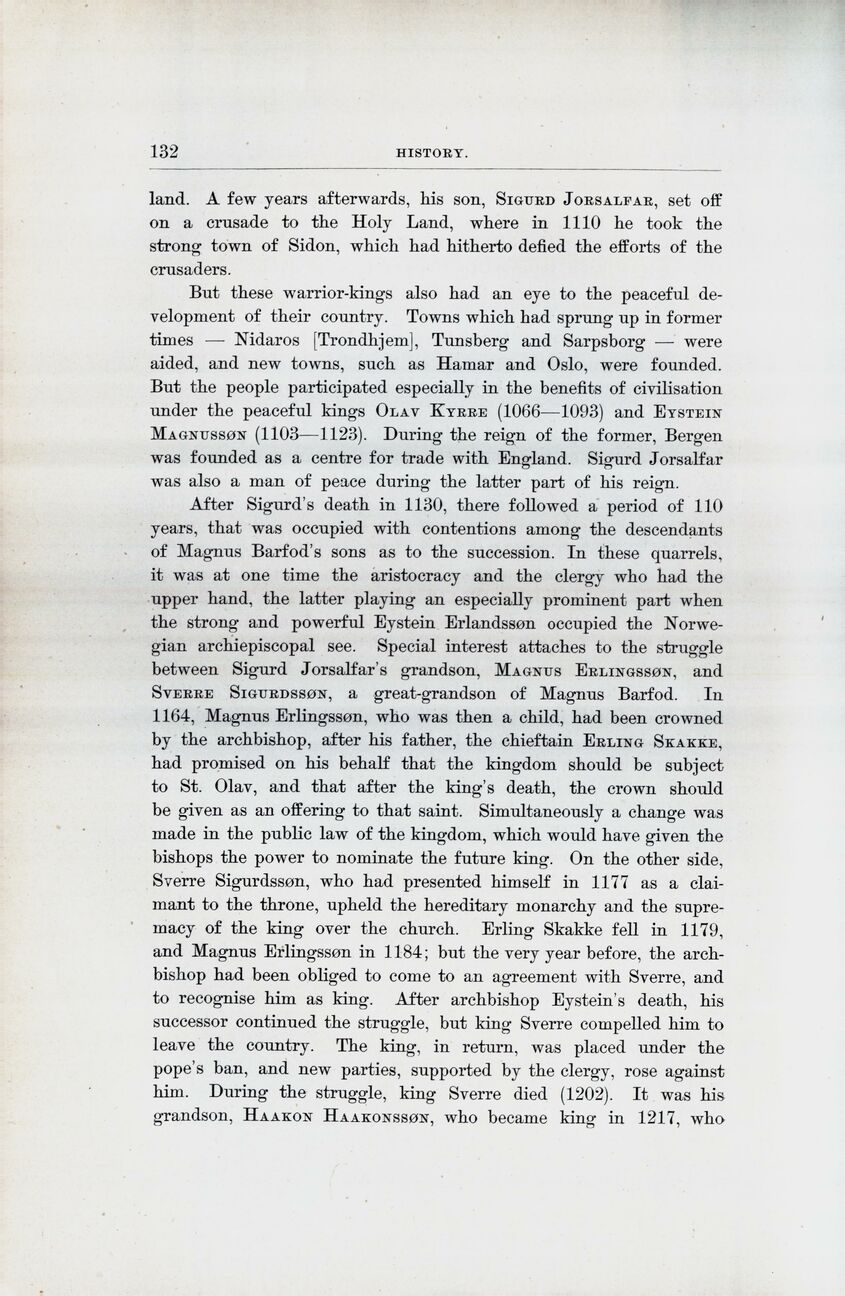
Full resolution (JPEG) - On this page / på denna sida - History, by O. A. Œverland

<< prev. page << föreg. sida << >> nästa sida >> next page >>
Below is the raw OCR text
from the above scanned image.
Do you see an error? Proofread the page now!
Här nedan syns maskintolkade texten från faksimilbilden ovan.
Ser du något fel? Korrekturläs sidan nu!
This page has been proofread at least once.
(diff)
(history)
Denna sida har korrekturlästs minst en gång.
(skillnad)
(historik)
Ireland. A few years afterwards, his son, Sigurd Jorsalfar, set off
on a crusade to the Holy Land, where in 1110 he took the
strong town of Sidon, which had hitherto defied the efforts of the
crusaders.
But these warrior-kings also had an eye to the peaceful
development of their country. Towns which had sprung up in former
times — Nidaros [Trondhjem], Tunsberg and Sarpsborg — were
aided, and new towns, such as Hamar and Oslo, were founded.
But the people participated especially in the benefits of civilisation
under the peaceful kings Olav Kyrre (1066—1093) and Eystein
Magnussøn (1103—1123). During the reign of the former, Bergen
was founded as a centre for trade with England. Sigurd Jorsalfar
was also a man of peace during the latter part of his reign.
After Sigurd’s death in 1130, there followed a period of 110
years, that was occupied with contentions among the descendants
of Magnus Barfod’s sons as to the succession. In these quarrels,
it was at one time the aristocracy and the clergy who had the
upper hand, the latter playing an especially prominent part when
the strong and powerful Eystein Erlandssøn occupied the
Norwegian archiepiscopal see. [[** sic = seat? **]] Special interest attaches to the struggle
between Sigurd Jorsalfar’s grandson, Magnus Erlingssøn, and
Sverre Sigurdssøn, a great-grandson of Magnus Barfod. In
1164, Magnus Erlingssøn, who was then a child, had been crowned
by the archbishop, after his father, the chieftain Erling Skakke,
had promised on his behalf that the kingdom should be subject
to St. Olav, and that after the king’s death, the crown should
be given as an offering to that saint. Simultaneously a change was
made in the public law of the kingdom, which would have given the
bishops the power to nominate the future king. On the other side,
Sverre Sigurdssøn, who had presented himself in 1177 as a
claimant to the throne, upheld the hereditary monarchy and the
supremacy of the king over the church. Erling Skakke fell in 1179,
and Magnus Erlingssøn in 1184; but the very year before, the
archbishop had been obliged to come to an agreement with Sverre, and
to recognise him as king. After archbishop Eystein’s death, his
successor continued the struggle, but king Sverre compelled him to
leave the country. The king, in return, was placed under the
pope’s ban, and new parties, supported by the clergy, rose against
him. During the struggle, king Sverre died (1202). It was his
grandson, Haakon Haakonssøn, who became king in 1217, who
<< prev. page << föreg. sida << >> nästa sida >> next page >>